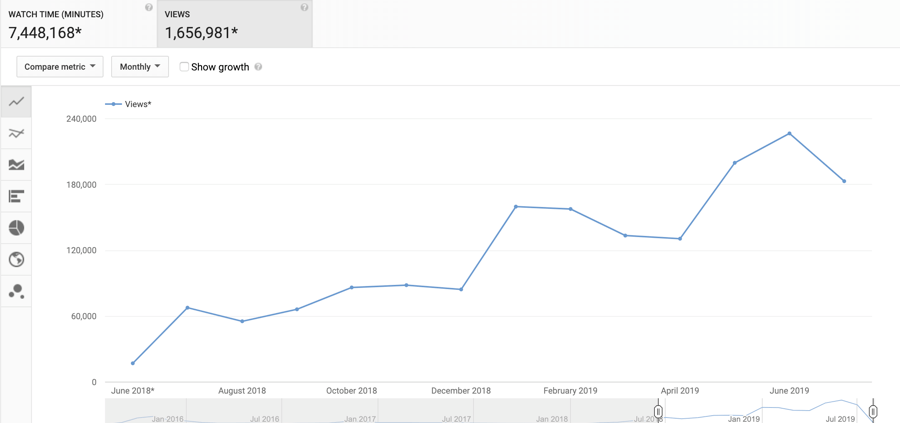Do you want to increase your YouTube channel’s viewership? The best way to achieve this is by focusing on topics that have high search demand. Our Ahrefs YouTube channel gained over 200,000 views in a year by following this approach, after starting with just 10,000 views per month.
In this article, I will guide you through the process of finding high-quality keywords on YouTube using three simple steps.
Step 1: Map Out The Hierarchical Structure Of The Topic
Let’s say you run an online business selling phone cases, and you want to create a YouTube channel to attract potential customers by making videos of unboxing new phones. Your initial thought might be to cover general topics with huge search volumes. However, this can lead to a problem. If the video topic is too broad, the users you attract may not be the right target audience. On the other hand, if the topic is too narrow, you may not attract enough people. To solve this issue, you need to map out the topic hierarchy. For example, if it’s an unboxing video channel, the word “unboxing” may be at the top of the structure. Starting from the top, you can list some popular mobile phone brands, and then one layer below those brands, you can add some specific phone models.
Step 2: Generate Keywords And Find Their Search Volume
To find out what people are searching for related to your topic, you can use a keyword research tool. However, keep in mind that not all keyword research tools show YouTube search volume, which is important because people search differently on YouTube compared to Google. Therefore, it’s recommended to use a tool that provides both Google and YouTube search volume data. For instance, Google Trends indicates that searches for “pizza dough recipe” on Google have been decreasing gradually.
The trend for YouTube is going up, but relying solely on the number of video views may not provide accurate insights. For instance, if we consider our YouTube ranking for the keyword “SEO audit,” the ranking is good and the video has received an impressive 640,000 views over the past three years, averaging about 18,000 views per month. However, upon analyzing our YouTube analytics reports, we discovered that most of the views came from paid YouTube ads rather than organic searches.
Step 3: Check Search Intent
It is crucial to understand your users’ search intent before you start any research. Both YouTube and Google aim to provide users with the results they are looking for. For instance, when searching for “Apple” on YouTube, the results show videos and introductions related to the computer company rather than fruit-related content.
To conduct keyword research effectively, you should ask yourself what users searching for a particular term want to see. While some keywords have clear search intent, others are ambiguous. For example, a user searching for “Galaxy S9 unboxing” wants to watch a video that shows the unboxing of a Galaxy S9 phone. On the other hand, keywords like “iPhone app” can have multiple interpretations.
The quickest way to identify the search intent for a keyword is by searching for it on YouTube and analyzing the top results.
Users often search for “iPhone apps” to find review videos, particularly for the popular apps released this year. If you want to rank on YouTube for this search term, it is recommended that you create this type of video.
Final Conclusion
If you haven’t identified the high-search volume keywords, it’s highly unlikely that your YouTube videos will get significant views from YouTube search. It’s as simple as that.
We know this because last year we created a series of product-related videos called “Marketing with Ahrefs”. These videos didn’t have much search volume, so we didn’t get a lot of traffic from YouTube search.
If your goal is to build your own YouTube channel and get more views, then it’s recommended that you start with keyword research.




